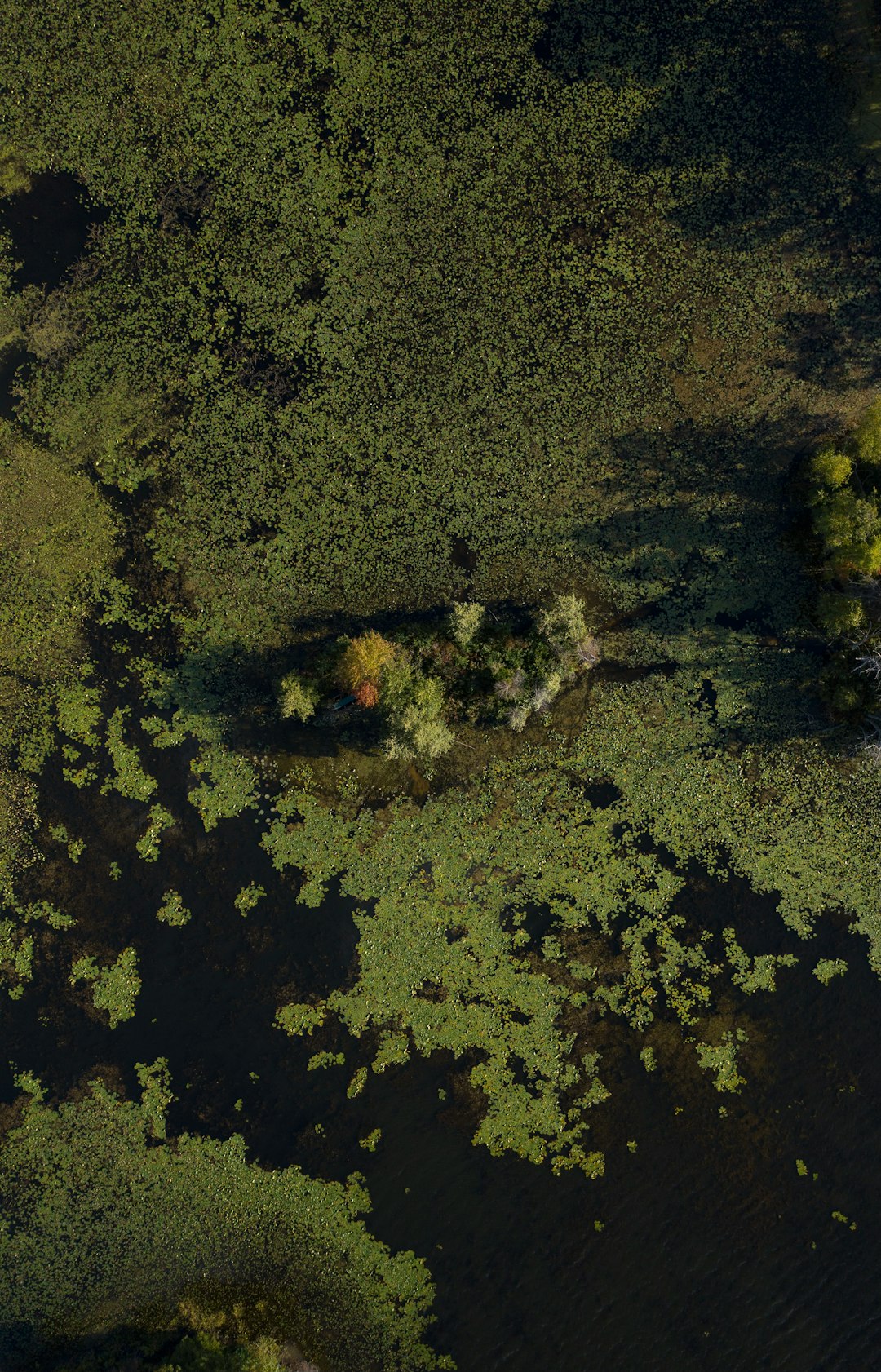 Photo from unsplash
Photo from unsplashOriginally Posted On: A Complete Guide to Farm Pond Algae Control – The Weeders Digest
Most of the time, pond algae isn’t harmful–even if it is unsightly.
That being said, toxic strains of algae can take over your pond, particularly in periods of high heat or drought. Plus, when algae become too dense in your farm pond, it can rob the water of the dissolved oxygen your fish need to thrive.
Fortunately, by taking the right steps, you can practice regular farm pond algae control to prevent the spread of harmful algae.
Read on to learn how to control algae in a farm pond to maintain the perfect balance between fish, plant life, and oxygen.
Taking Preventative MeasuresSome steps can be taken before algae appear to keep algae levels under control. Let’s take a look at a few preventative measures you can take, including ways to build an algae-resistant pond and ways to protect a pre-existing pond.
Build Your Pond for Algae DefenseIf you’re building a new pond on your farmland, you can create a design that has algae defense built right in. The key is in your shoreline depth.
We often see ponds built on a gradient, becoming shallower as it gets closer to the shore. However, this shape encourages plant growth along the edges of the pond that can encourage the overgrowth of algae.
It’s best to give your shoreline a depth of 2 to 3 feet. This makes photosynthesis on the pond’s floor more difficult and discourages unwanted growth. Maintain your shoreline by planting desired plants along the edges that discourage erosion. If you use your pond water to keep livestock hydrated, pump water elsewhere, rather than allowing livestock to come up to the pond’s edge for a drink.
Use a Tarp to Disrupt PhotosynthesisIf your pond is already built and you’re worried about shallow waters, there are easy ways that you can still discourage photosynthesis on the pond’s floor. All you need is a large sheet of black or grey plastic and a dozen or so stakes.
Puncture the tarp with several small holes that allow oxygen to escape through the tarp. Then, stake the tarp to the pond’s floor so that it doesn’t float to the surface or get pushed around in the wind.
Stock Your Pond With Algae EatersIf symbiosis is your specialty, you can keep pond algae under control by stocking your pond with voracious algae eaters. For example, adding a few Asian triploid grass carp to your pond is a great way to naturally maintain algae levels.
If you have a minor plant problem, five fish per acre of pond will do the trick. If your problem is moderate, 10 to 15 fish per acre is ideal. If the problem is severe and recurrent, you may want to invest in more than 15 fish per acre.
Remember, largemouth bass may go after grass carp. If your pond is home to largemouth bass, you will want to get grass carp that are at least one foot in length to reduce loss.
Farm Pond Algae Control Throughout the YearMaybe you’re already knee-deep in an algae problem and you’re looking for a way to get it under control. Maybe you’ve had recurrent issues with algae blooms and you need a way to tackle algae throughout the year. With these tools and tips, you’ll be able to manage algae all year round.
Rake or Skim Away Early BloomsIn early spring when the temperature turns and plants begin to bloom, you may want to tackle any early blooms growing in your pond.
Algae rakes are a great tool to use when breaking up and getting rid of early algae blooms in your pond.
Algae skimmers are another great tool to have at your disposal when keeping farm pond algae under control. Skimmers may be more suited to larger ponds.
Add AerationIf you don’t want to add another round of manual labor to your spring routine, installing a pond aerator may help to discourage the overproduction of algae blooms throughout the year.
To understand how a pond aerator can help reduce algae levels, we have to dig into the science. All ponds contain nitrogen and phosphate levels that are controlled by dissolved oxygen. That dissolved oxygen is also an integral part of decomposition, fish health, and more–without it, your pond loses its natural balance.
However, if your dissolved oxygen levels are low, nitrogen and phosphate levels increase and create a perfect environment for aggressive algal blooms to take hold. By introducing an aerator, you ensure that other organisms in your pond are better equipped to eat away algal blooms and maintain equilibrium.
Try an AlgaecideDepending on the state of your farm pond–or how quickly you want to get the algae under control–you may not have much luck with some of the methods we’ve listed already. If this is the case, your next step should be to introduce algaecide into your pond. Algaecide can typically clear up even the most algae-ridden pond.
(Remember, you probably don’t want to substitute herbicide for an algaecide. Herbicides will also stifle the growth of more desirable plants. This is particularly an issue if your pond water is used for hydroponics or other crop growth.)
Don’t Let Farm Pond Algae Take Over Your PondOftentimes, farm algae are more unsightly than anything else. However, left to thrive unchecked, farm pond algae can become harmful for the other organisms that live in or rely on your farm pond.
That’s why we’ve developed an extensive line of farm pond algae control products. Take a look at our entire selection of algae control products to find everything you need to maintain your farm pond this year.












